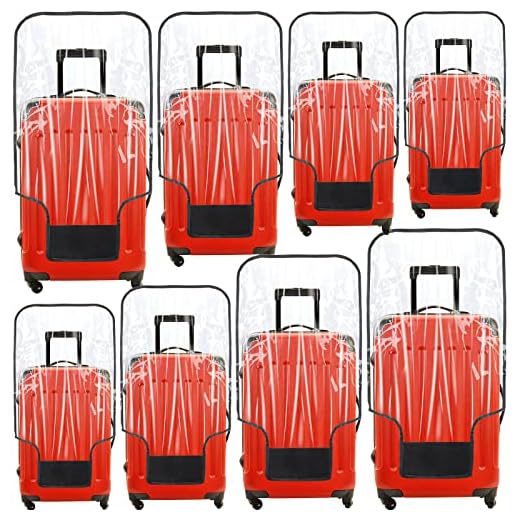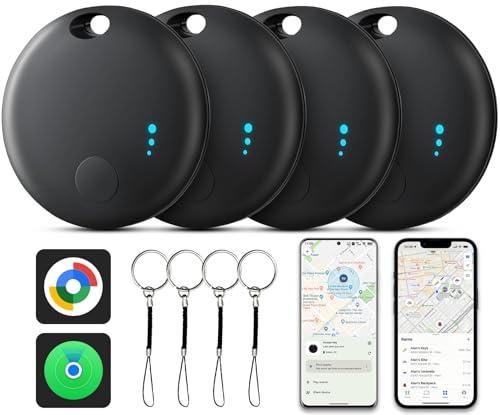



To safeguard your belongings during travel, meticulous packing and vigilant monitoring of your suitcases are paramount. Utilize strong, unique locks on zippers and consider GPS tracking devices to keep tabs on your items. Always label your bags clearly with your contact information to facilitate their return in case of loss.
Be aware of the surroundings at airports and train stations. Pay attention to unfamiliar individuals near your belongings. It’s wise to avoid leaving your bags unattended, even for a moment. Regularly check your baggage receipts and ensure that all items are accounted for upon arrival.
If any discrepancies arise, immediately report them to airline or transport staff to initiate a recovery process. Document any damage or loss with photographs and receipts, as this evidence will be crucial for claims with your insurance provider. Always stay informed about the policies of the transport service regarding baggage rights and compensation.
Examine Possibilities of Tampering with Your Belongings
To address concerns, check the security features of your suitcase. Modern bags may include built-in locks, tracking devices, and tamper-proof zippers. Ensure you use these features effectively. If your bag appears compromised, report it immediately to airport security or the airline’s customer service.
Preventive Measures
Utilize distinct identifiers on your case such as tags, ribbons, or personalized stickers. These will help differentiate your items in crowded areas. Additionally, consider photographing your belongings before travel. In case of issues, having evidence may expedite resolutions.
What to Do If You Suspect Interference
If you notice signs of unauthorized access, document your findings. Collect all relevant information, including time and location. Inform airport personnel and file a report. This helps in tracking incidents and may provide assistance in reclaiming items.
| Signs of Tampering | Action to Take |
|---|---|
| Broken locks or zippers | Notify airport security |
| Unfamiliar items inside | Inspect and report |
| Damage on the exterior | Document and inform airline |
| Missing items | File a claim immediately |
Recognizing Signs of Luggage Tampering
To detect tampering, start by carefully examining your bags for any unusual marks or damages. Inspect zippers, seams, and locks for signs of forced entry. If a zipper moves more freely than usual, it may indicate an attempt to access the contents. Check the straps and handles for uncharacteristic wear or tampering.
Behavioral Indicators
Monitor for unexpected signs before and after travel. If your bag appears out of place or has been moved from its original position, this should raise a red flag. Also, consider how it feels during transit; a sudden change in weight could suggest items were added or removed.
Secure Your Belongings
Using TSA-approved locks can enhance security, as they allow authorities to inspect without damaging your bag. Additionally, keeping valuables in carry-ons reduces risk. For further protection, consider techniques similar to how to bury invisible dog fence wire, ensuring items are hidden or disguised effectively within your luggage.
Common Methods Used by Thieves to Access Baggage
Travelers should be aware of tactics commonly employed by criminals to breach suitcase security. One prevalent method is lock picking, where thieves use specialized tools to circumvent zippers or locks. Investing in robust security options, such as TSA-approved locks, can mitigate this risk.
Another technique is distraction tactics. Often, an accomplice may create a scene or cause a disturbance, allowing the other to access unattended bags. Staying vigilant and maintaining personal belongings within sight is crucial.
Slip-and-snag occurs when bags are snagged by a thief while the owner is distracted. Using a sturdy travel strap or a bag marked with unique colors can deter such actions.
Some thieves employ fake airport personnel uniforms to gain trust. They may approach unsuspecting travelers to ask for assistance, during which they can make off with unattended items. Always verify the identity of someone claiming to be airport staff.
Utilizing technology, criminals may attempt to intercept Bluetooth signals from smart luggage. Travelers should consider deactivating wireless functions when bags are not in use.
Lastly, ensure that valuables are stored in inaccessible compartments. Items placed deep within the bag are less likely to be targeted. Travelers should also consider carrying best dual canopy umbrella or unique items that can serve as a distraction.
Steps to Secure Your Luggage Before Travel
Utilize high-quality locks that are TSA-approved to deter unauthorized access. Select zippers that can be secured with these locks for added protection.
Always pack valuables in carry-on bags. This reduces the risk of losing important items, as checked baggage is more susceptible to tampering.
Consider using luggage wraps or protective covers. These barriers can make it harder for thieves to access contents and provide an additional layer of security.
Label bags discreetly. Instead of using personal information, opt for a unique identifier like a code or symbol that only you recognize.
Ensure that your baggage is visually distinct. Use bright colors or distinctive patterns to make it stand out, helping to prevent mix-ups and theft.
Document the contents of your bags by taking photos. This may assist in recovery efforts should anything go missing.
Arrive early at airports to provide ample time for security checks, minimizing the risk of rushing through the process, which can lead to oversight.
Stay aware of your surroundings. Staff in airports and busy areas who seem out of place or suspicious may indicate potential security issues.
Always keep an eye on your baggage during transit. If you must leave it unattended, use a secure method like cable ties or a luggage strap that requires tools for removal.
What to Do If You Suspect Interference with Your Baggage
Immediately report any concerns to airport authorities. Locate your airline’s customer service desk or the nearest security office. Provide them with specific details about your suspicions and any unusual observations.
Document Everything
Take detailed notes on the condition of your suitcase upon arrival. Photograph any signs of tampering, such as broken locks or unusual marks. Collect all relevant receipts and boarding passes for reference.
File a Report
Submit a formal complaint with your airline. Many carriers have specific procedures for handling claims related to theft or damage. Ensure you receive a copy of your report along with a tracking number.
Check local laws regarding theft. Depending on the circumstances, consider involving local law enforcement. Keep records of all communication related to the incident.
Consider changing the locks or combinations if items appear missing. This action can help secure your belongings for future trips.
Airline Policies Addressing Luggage Tampering Issues

Airlines implement strict measures to mitigate risks related to baggage tampering. Most carriers have policies defining protocols for handling suspicious activities concerning checked items. These guidelines often include thorough screening processes at security checks, which utilize advanced technology to identify unauthorized alterations.
Claims and Compensation Procedures
In the event of suspected baggage mishandling, airlines typically require travelers to report incidents immediately upon arrival at their destination. Travelers are advised to document any visible signs of tampering with photographs and detailed descriptions, which can facilitate compensation claims. Specific airlines may have distinct procedures for submitting claims, emphasizing the necessity of adhering to set timeframes and documentation requirements.
Preventive Measures by Airlines

Several airlines are now introducing tamper-evident seals on baggage to provide a clear indication of unauthorized access. Furthermore, some carriers offer additional insurance options for valuable items, giving travelers more peace of mind regarding their belongings. For enhanced durability, consider exploring the best luggage brand for durability to reduce the risk of damage during transit.
Preventative Measures for Future Travels
Invest in high-quality luggage that features robust locks and durable materials. This adds an initial layer of security against unauthorized access.
Utilize luggage tags that include your contact information. Consider using tags that are not easily removable to deter quick thefts.
- Attach a sturdy strap around your baggage to make it less accessible.
- Ensure zippers are double-locked if possible, as this discourages tampering.
- Make use of luggage trackable devices to monitor the location of your belongings during transit.
Before departing, document the condition and contents of your items. Take photographs and keep an inventory, which may assist in claims if issues arise.
- Travel during peak hours to limit opportunities for mischief.
- Store valuables within a carry-on instead of checked items whenever feasible.
- Arrange your bags close to your person when in waiting areas.
Ensure awareness of your surroundings, especially in crowded spaces. Report suspicious behavior to airport authorities immediately.
Lastly, familiarize yourself with specific airline policies regarding baggage safety. Understanding their protocols can aid in addressing potential issues swiftly.
FAQ:
What could cause someone to interfere with my luggage during travel?
There are several scenarios in which someone could interfere with your luggage. This might include theft, where a person may take your bag or its contents without permission. Alternatively, a traveler might accidentally take the wrong luggage, mistaking it for their own. In some cases, airport staff or security personnel might need to inspect your baggage, which can lead to temporary disruption. Understanding these possibilities can help you take precautions, such as keeping your luggage identifiable and secure.
What steps can I take to prevent interference with my luggage?
Preventing interference with your luggage starts with proper identification. Use sturdy luggage tags with your contact information. Consider securing your bags with locks or cable ties to deter theft. It’s also wise to keep valuables in your carry-on and avoid placing essential items in checked luggage. Keeping an eye on your bags at all times, especially during layovers or when switching transportation methods, can further minimize the risk of interference. Lastly, familiarize yourself with your airline’s policies regarding luggage handling and security checks.
What should I do if I suspect my luggage has been tampered with?
If you suspect that your luggage has been interfered with, it is important to take immediate action. First, inspect your bag and its contents thoroughly. Look for signs of tampering, such as broken locks or missing items. If you find any evidence, report it to the airline and the airport authorities without delay. They can help you investigate the situation further and might offer assistance in recovering any stolen items. Additionally, documenting the condition of your luggage with photographs can be beneficial for future claims.








